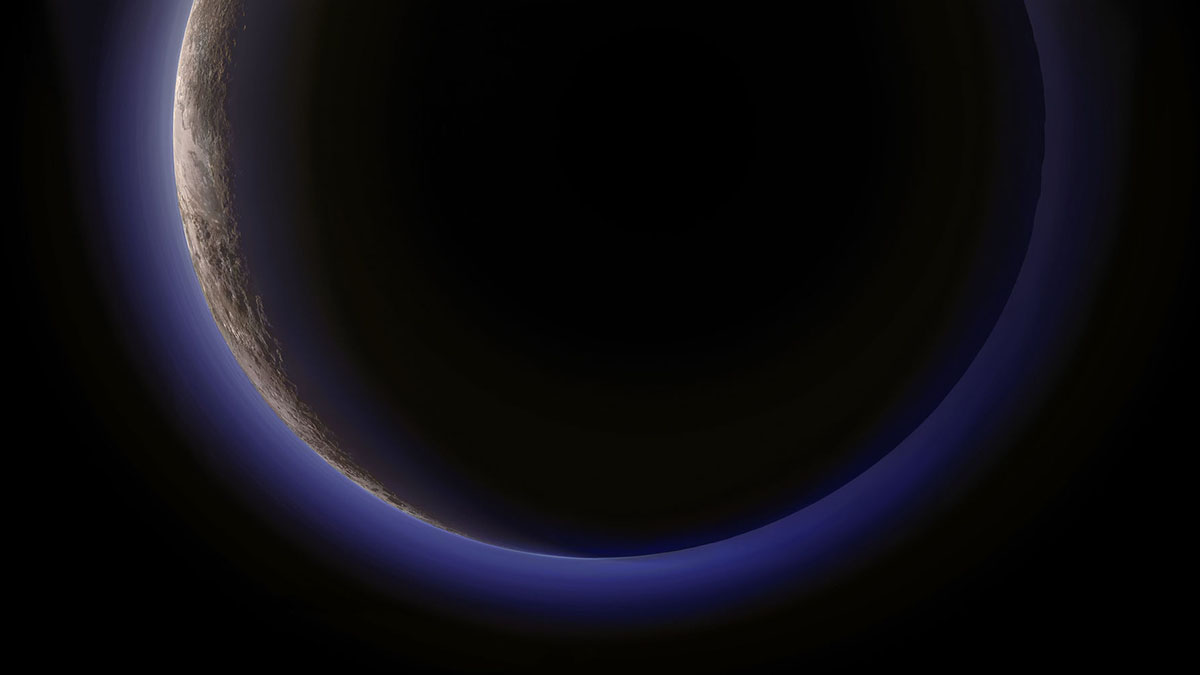under the hazy blue skies of… pluto?

From the “space is amazing” files comes the new revelation that skies on Pluto aren’t dull gray, or almost transparent white, as drawn in so many hypothetical illustrations we’ve seen over the years, but an almost Earthly tint of blue. Although Pluto’s atmosphere is also nitrogen-rich, that bluish glow doesn’t come from the nitrogen particles scattering the sunlight like they do here on Earth, but from that nitrogen and methane being broken down by the Sun’s ultraviolet radiation and forming soot-like organic molecules called tholins. As they settle down to the surface below and create deposits, they not only give the atmosphere a blue hue, but give Pluto its brownish-red appearance, much like they color Titan’s atmosphere and Triton’s cryovolcanoes. Standing on one of the ice mountains looking out at Sputnik Planum, you might just see something not at all dissimilar from classic artists’ impressions of how Mars might look mid-terraformation.
And here’s another fascinating thing about Pluto’s skies and atmospheric chemistry. We know a few other dwarf planets in the Kupier Belt, like Sedna and Ixion, that are also very rich in tholins and would look reddish to the naked eye. If they get enough sunlight to scatter, they might also have blue skies, though probably significantly muted compared to what we see on Pluto due to the extreme distance between them and the Sun. Who would’ve ever thought that as we finally make our way to the outer reaches of our solar system, we’d find familiar skies created by alien chemistry which rains the building blocks of life onto the surfaces of worlds chilled to -440 °F, or about as close to absolute zero as nature allows, orbiting in perpetual twilight? That’s by far the best thing about space exploration. You never know what amazing things you’ll find until you go and take a look for yourself because something is guaranteed to surprise you when you do.
update 10.09.2015: Whoops, it seems that when figuring out what Pluto’s sky would look like, I forgot just how little atmosphere it actually has. Because its pressure is so low and the nitrogen is so thin, you actually wouldn’t be able to see a blue sky, but a blue line on the horizon at dawn and dusk. The Bad Astronomer has the exact details of how long you could see Pluto’s blue sky in action, and sadly, it’s not for long. This also means that Sedna would have similar conditions and Ixion would lack the atmospheric gases to scatter light even if there is enough light that can be scattered into something visible to the naked eye. My apologies for the mistake. I try to keep this blog scientifically accurate to the best of my ability but I do make mistakes, especially when writing off the cuff, and this was one of those mistakes, hence the update to the post.





